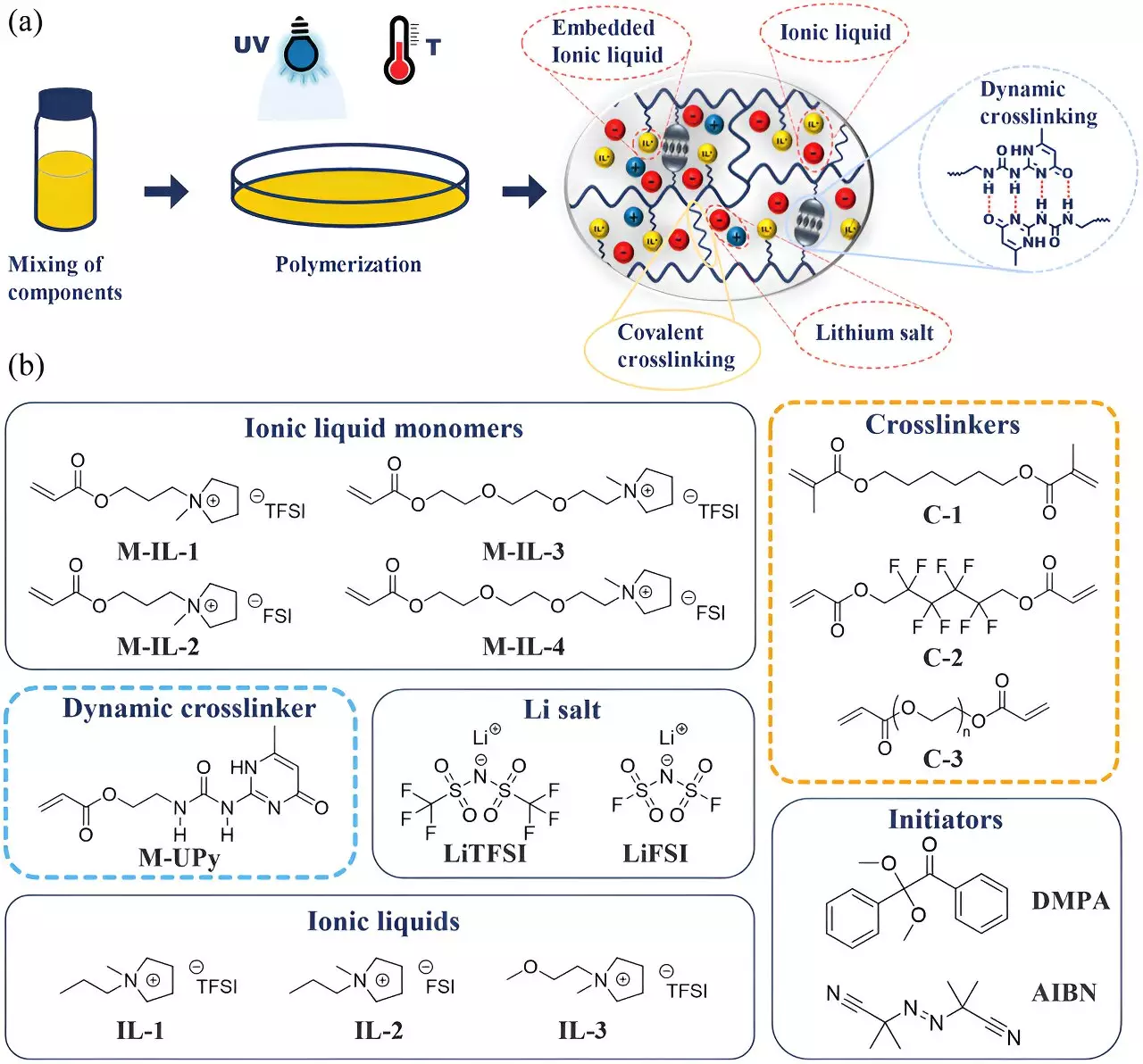The rise of portable electronics and electric vehicles has placed immense pressure on current energy storage technologies, particularly lithium-ion batteries. While these batteries have become the backbone of modern technology due to their rapid charging capabilities and convenience, they also present considerable safety risks. Researchers at the Martin Luther University Halle-Wittenberg (MLU) have risen to the challenge of improving the safety and efficiency of lithium-ion batteries through the development of a groundbreaking gel. This innovation not only addresses the flammability of conventional electrolytes but also promises enhanced performance, making it a significant milestone in battery technology.
Traditional lithium-ion batteries, while effective, are not without their drawbacks. A key element of these batteries is the electrolyte, a liquid medium that facilitates the movement of ions between the anode and cathode. However, these liquid electrolytes are highly flammable, posing serious risks of fire or explosion in the event of battery damage. The urgency for safer alternatives is heightened by the growing reliance on lithium-ion technology across various sectors, from consumer electronics to automotive applications.
The team at MLU, spearheaded by Professor Wolfgang Binder, acknowledges these risks and is committed to developing solutions to enhance battery safety. The need for innovative designs is apparent, especially with the increasing frequency of battery-related incidents that capture public attention and raise concerns about lithium-ion technology.
Dr. Anja Marinow and her team have engineered a novel polymeric gel that replaces liquid electrolytes, thus mitigating the risks associated with leakage and combustion. This gel maintains the essential conductivity while enhancing the thermal robustness of the battery. By binding the electrolyte within the polymer matrix, the new gel allows ions to move freely, much like a liquid, while also delivering the benefits of solid-state technology. This hybridization exemplifies a thoughtful balance between performance, safety, and durability.
One of the critical advancements in their research is the incorporation of ionic scaffolding within the polymer structure. This allows the gel to form a stabilizing interface on the electrodes, a previously critical function that traditional liquid electrolytes provided. The implications of this breakthrough are substantial; initial laboratory tests indicate that these gel electrolytes can operate stably at voltages exceeding 5 volts, far surpassing the safety threshold of conventional counterparts.
Advantages of the Gel-Based Approach
This gel-based electrolyte not only improves safety but also enhances the operational longevity of batteries. Users can expect more reliable performance over extended periods, reducing the inconvenience and costs associated with battery replacements. Moreover, the gel is designed with sustainability in mind. Researchers have taken steps to ensure that these gels can be recycled efficiently at the end of their life cycle, aligning with the global push towards more sustainable technological practices.
The collaboration within the European “BAT4EVER” project speaks to the potential of this innovation. By uniting academic institutions, research laboratories, and industry partners across multiple countries, the initiative fosters a comprehensive approach to tackling the challenges of battery technology head-on. It also highlights the importance of international collaboration in achieving breakthroughs that can significantly impact energy storage solutions.
Despite the promising results achieved thus far, researchers caution that further long-term studies are essential before the new gel batteries can be commercially manufactured. Continued efforts focused on the sustainability of the gel and its integration into existing infrastructure will be crucial for successful industry adoption. The establishment of the “European Center for Just Transition Research and Impact-Driven Transfer (JTC)” at MLU will play a vital role in this next phase, emphasizing structural changes within Saxony-Anhalt’s economy, particularly in relation to a circular economy and social innovation.
The innovative polymer gel developed by researchers at MLU represents a significant step forward in the quest for safer, more effective lithium-ion batteries. As this technology advances, it holds the potential to not only transform the battery landscape but also contribute to broader sustainability goals in energy storage solutions. With ongoing research and collaborative efforts across Europe, the future of battery technology appears brighter and more secure than ever.


Leave a Reply